One of the most attractive representatives of the family of bells, decorating alpine slides and rokaria, is the flower bell Carpathian. Locked by groups, graceful flowers form dense, thick bushes with gentle bowls of white, saturated blue, purple color. Due to long-term and continuous charming blossom, winter hardiness and undepair to the soil, the plant loved to many gardeners and is successfully used to design unusual compositions with landscape designers. How to grow these charming flowers in the garden, read further.
Karpatsky bell: Description
Karpatsky bell is a dwarf decorative type of bell family. This is a perennial grassy plant, the natural habitat of which lime rocks of the mountains of Central Europe and the Carpathians, from where the name occurred.
Plant Karpathian bell is a low long-term grassy bush with thin branchy stems, which does not grow more than 30 cm in height. Burnt heart-shaped leaves are collected in a socket forming a spherical shape bushes. Stem leaves are smaller, on short stuffs.
The special charm of the plant is given large in the form of a bowl of flowers, in diameter up to 5 cm. The color of the petals from the gentle white to dark purple. Tender flowers are located one on the stem. Start of flowering - June. Flowering long, abundant, flowers, alternately replace each other. After flowering, the Karpathian bell forms the fruit - a box in the shape of a cylinder.
Varieties of varieties of the Karpathian bell
Herbatous plants are used both for open soil, and for growing in room conditions, in a pot. For the cultivation of the Karpathian bell at the cottage or creating beautiful small beds, a compact variety is suitable, which differ in color of flowers and flowering duration:
- Bell carpathian gnome. A bush has a rounded shape, blooms gentle blue or white flowers.
- Blookol Karpatsky Blue Clips (Blue Clips). Dwarf variety, bush tall up to 20 cm. The bell carpathian blue is unpretentious in care, can be grown in the garden, as well as a pot culture. Flowers are blue, up to 5 cm in diameter. Against the background of the low-speed bush, it seems even larger. Variety varieties: Deep Blue Clips - Dark blue flowers, large, White Clips are snow-white flowers.
- Alba. Flowers with snow-white flowers.
- Cellina, Isabel. Flowers of this variety have a beautiful, bright blue shade.
- White Star. Common variety beloved by our summer houses. Inflorescences - snow-white.
- Carpatenx. Tint of inflorescence - gently lilac or lilac.
Karpatsky bell - landing
The unpretentiousness of the Karpathian bell attracts many gardeners who want to decorate their plot or garden with beautiful flowers with abundant and long blossom. You can grow a plant both on the sunny side of the garden and in a half. When choosing a suitable landing site, it should be remembered that this multi-year flower grows perfectly in one place, without transplanting for more than 5 years. For a fragile plant, choose a plot without drafts.
The best soil for growing plants is a fertile, loose substrate with excellent drainage with a neutral or weakly alkaline reaction. Heavy and thin soils, where moisture is often stared or groundwatened, are not suitable for planting plants. The bell dies from the re-fulfillment of moisture, which leads to the rotation of the root system. Therefore, for planting colors, you should choose the flower beds located on the hill or stony areas. Plant bells in open ground can only after deep people of soil in spring. If the soils are heavy, it is necessary to make river sand and humus, into poor soils are made by turf soil and complex fertilizers, the feed of manure and peat, since these feeding can provoke the development of a fungal disease.
How to grow a bell carpathian from seeds
Spring planting of the seed of the bell in an open soil is the most popular way to grow a flower for the southern regions, where the heat of the soil is already sufficient. 2 weeks after landing, it is already possible to observe the first shoots. After the first leaflets appeared on the sprouts, the bushes are picked and transplanted at a distance of 10 cm from each other. It is possible to sow seeds in the fall, the optimal month for sowing is mid October. The first young sprouts appear after the melting of the snow, when the soil warms up. The seeds of the Karpathian bell is very small, it is enough to decompose them on the surface of a loose soil and sprinkle with sand. Under the optimal conditions and compliance with all the requirements for the composition of the soil, 1 gram of seed gives excellent germination.
Karpatsky bell: Cultivation of seedlings
There is another landing method, but is long and time-consuming, it is a planting of the sowing material on seedlings in the boxes. You can sow seeds already in February-March.
Stages of work:
- For seedlings prepare special boxes or containers with nutritional soil. The finished soil intended for the cultivation of seedlings can be purchased in specialized stores or prepare independently. To do this, blend turfs, humid and river sand, observing the proportion of 6: 3: 1.
- Seeding seeds are produced in a humidified substrate. It is enough to scatter small seeds on the surface of the soil and slightly press them, without the tampering and not falling asleep with the layer of land.
- Capacities with seeds are covered with film or glass and placed in a warm, well-lit room or a windowsill.
- Within 2 weeks, the film is necessary to operate daily for venting and humidifying the soil using a pulverizer. It is also important to remove the condensate, which is formed on the inside of the film or glass.
The first small shoots appear in the second third week after their sowing into the ground. Seedlings grow slowly and require additional lighting. After the appearance of the first leaflets, shoots are divered and seated into cups of 2-3 cooks. In May, the seedlings of the Karpathian bell is ready for landing into an open ground.
The reproduction of the Karpatsky bell
In addition to the seed method of reproduction, which was mentioned above, the Karpathian bell determine the grinding or fission of the root.
For the use of the rhizomes division method, only adults and strengthened plants are suitable, at least 3 years old. To split the bush, it is necessary to dig up from the wet soil and cut the rhizome to the sharp knife into several parts, processing the sections of the activated carbon powder. At each part of the plant should be at least one root rosette. Dellets are planted at a permanent place on the site, in the prepared moistened soil.
In the summer, before the start of flowering, the method of breeding with green cuttings is applied. It is necessary to cut the young stems so that there are three intercoums on each cutken. Cherenkov sections should be treated with growth stimulant using special preparations. For example, Korniner or Epin, thanks to which a strong healthy root system for the young plant is formed. The cutting stimulants treated with a stimulator are planted into a container with a soil and covered with a film for rooting, not forgetting to ventilate and moisturizing landings. After the appearance of the first leaflets, at the beginning of the autumn, the cuttings planted on a permanent place in the open ground.
Karpathian bells: Care
The bell is a Carpathian unpretentious plant, which perfectly adapts to any climatic conditions, so it does not need it in special care.
Watering Karpathian bells
In the regular watering of the flower there is no need, especially in a rainy summer. However, in drought, with a long lack of precipitation, the bells should be watered using up to 10 liters of water under the bush. After irrigation, the soil must be exploded for good breathability.
Undercotter Karpathian bells
Making fertilizers in the ground is produced twice per season. For first feeding, nitrogen-containing fertilizers are used, it is made early in spring, before the snow began to melting. The second feeding of mineral fertilizers is carried out during the formation of buds.
Mulching and weeding Karpathian bells
The soil where the bells grow, should always be loose and water permeable. Frequent weeds and removal of weeds will provide the root system of the plant with the necessary moisture and oxygen. In the arid summer to prevent the rapid evaporation of moisture, the soil needs mulching with dry grass or sawdust.
Removal of the shockless inflorescences of the Karpathian bell
The inflorescences that beatflowers must be deleted in a timely manner in order to give rise to new inflorescences, as well as to prevent self-seeds, as a result of which chaotic landing of bells may appear on the flower bed.
Collection of seeds of the Karpathian bell
For breeding bells in a seed method, it is necessary to collect sowing material. For this, the bloody inflorescences are not removed, but leave for the formation of fruit boxes with seeds. As soon as the boxes are darked and start opening, they are collected, and then dried in the shade. The dried ripe seeds are stored in a dry place, in a paper bag or planted in the fall in open ground to a permanent place. It is worth noting that the bloom of a plant planted with seeds will not immediately, but on the third year of life.
Wintering bell carpathian
Karpatsky bell is a hardy and frost-resistant plant. In the southern regions and in the middle lane of our country, where the winter is soft and snowy, the plant does not need winter shelter. In the northern regions or in case the weather forecasters predict a harsh winter in your region, bushes are advisable to hide and insulate. The stalks are cut under the root and are covered with a layer of fallen autumn foliage or spruce branches.
Karpatsky bell: Diseases and pests
The plant is resistant to pests, with high-quality care and compliance with all cultivation conditions, is rarely subjected to diseases. But, in unpretentious garden culture there is one disadvantage - a perennial growing in one place for 5-6 years, contributes to the growth of pathogenic organisms in the soil that can destroy the plant. To combat the massive development of microorganisms in the soil, preventive measures are used. In the spring and autumn planting it is necessary to process with a weak solution of Fundazola.
In the rainy summer on the bushes of bells, it is possible to attack slugs, snails and slumping Pennitsa. To combat snail and slugs, dry mustard, burning pepper, scattered among bushes, as well as chemical agents: Thunder, meta. Laying the landing from a slottening Potnie will help spraying with garlic water.
Karpathian bell in landscape design
Carpathian bell is one of the most beautiful and elegant plants to decorate the alpine slides, rocaries, rocky garden, where lush bushes with blue, white, purulent numerous flowers are charmingly stand out against the background of gray stones. Borders, garden stone tracks, framed by planting gentle bells look beautifully. You can plant on the flower bed of one grade bells, and you can combine a variety of varieties, with different color of inflorescences, creating incredibly beautiful compositions.

Gardeners often use landing of low-speed bells to decorate the flower near the arbors, at home, the veranda, where you can enjoy their beautiful blooming the whole warm season. It is possible to plant bells into large vases or containers with good drainage and decorate open loggias or terraces.
Carpathian bells are not capricious and very beautiful perennial flowers. Their tenderness and charm, combined with uncomplicated care and cultivation, won the hearts of many gardeners. Having planted once in the site this is a charming plant, you can never refuse it.

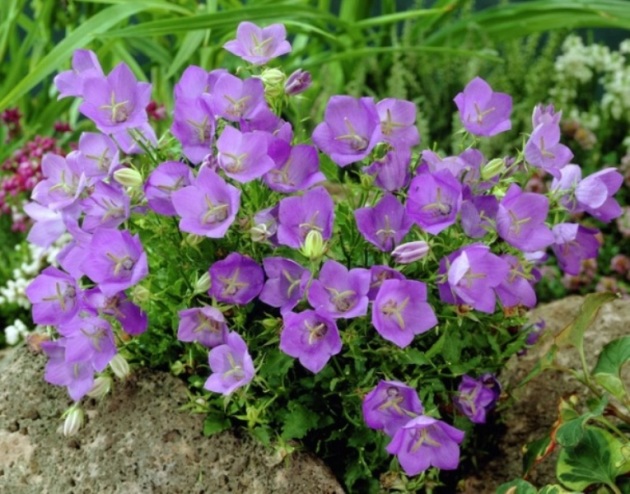
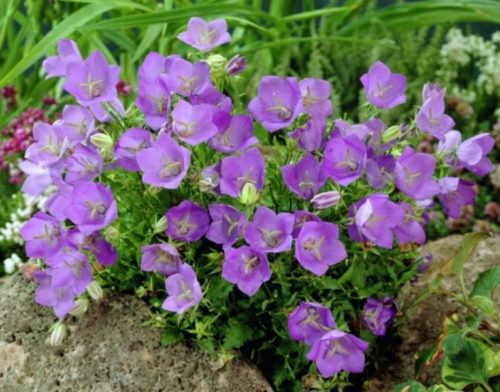
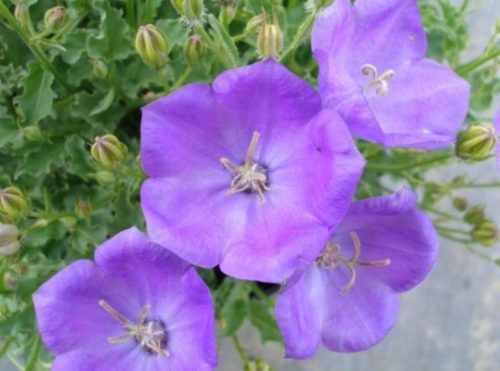
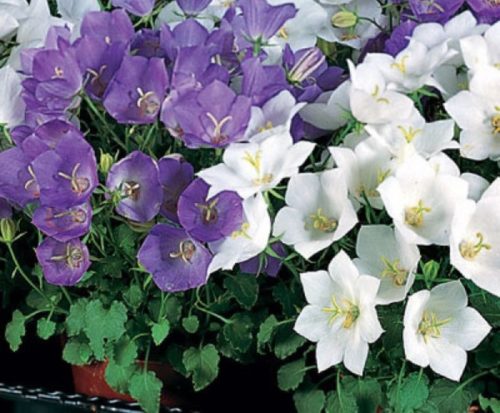
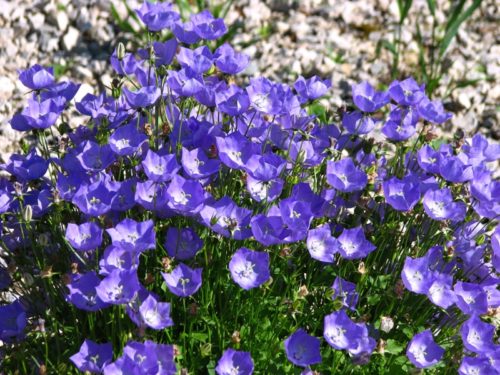
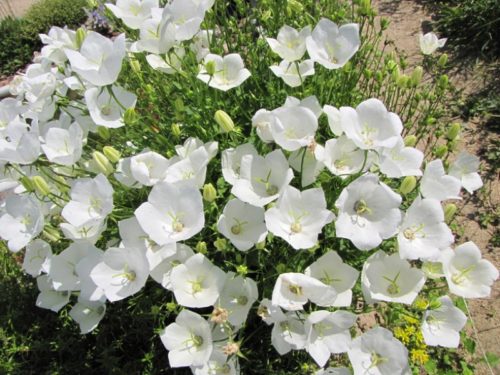
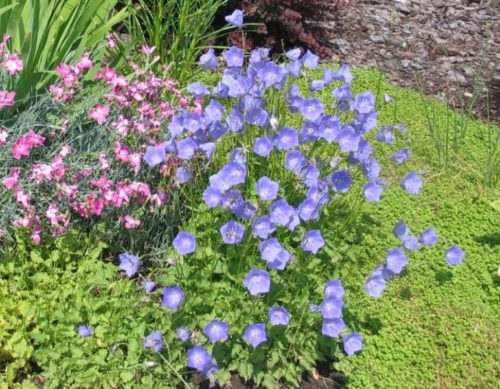
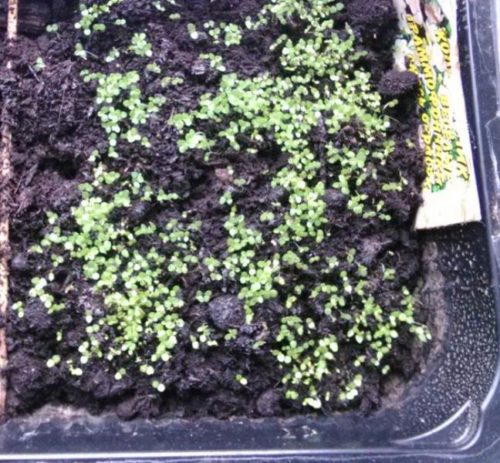
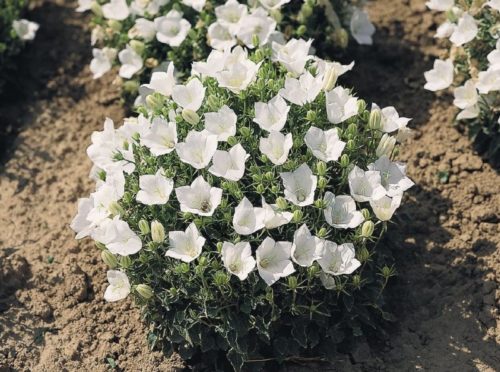
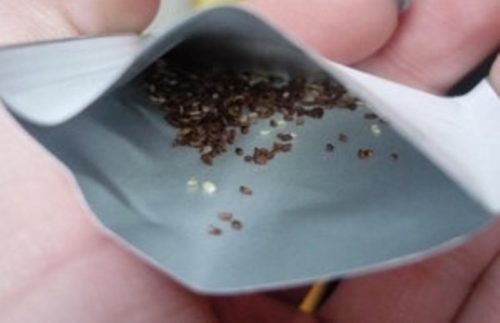
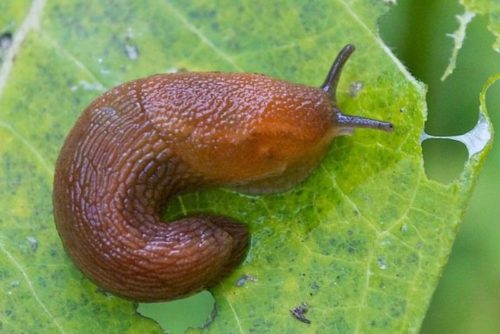
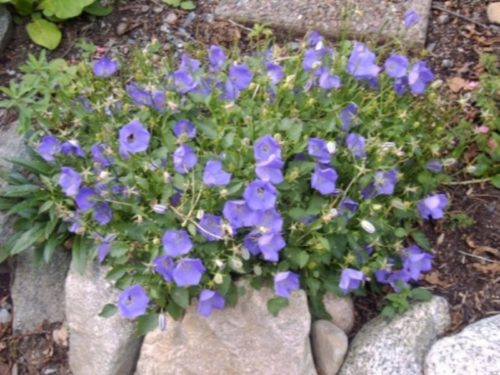

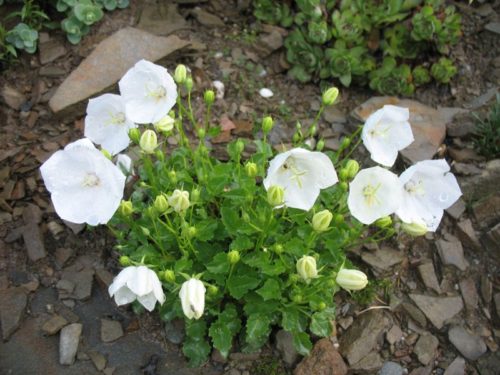
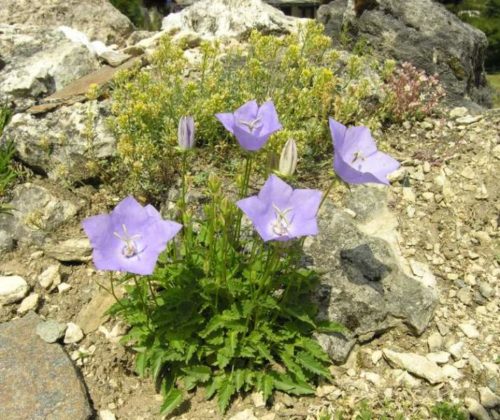
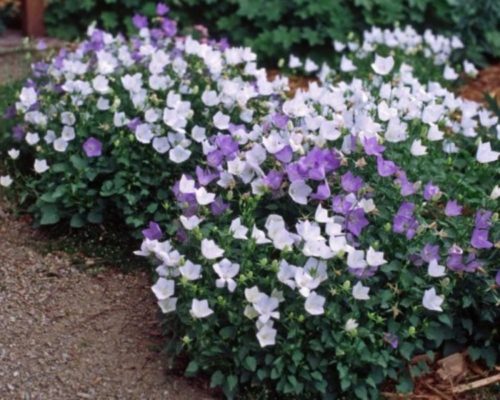
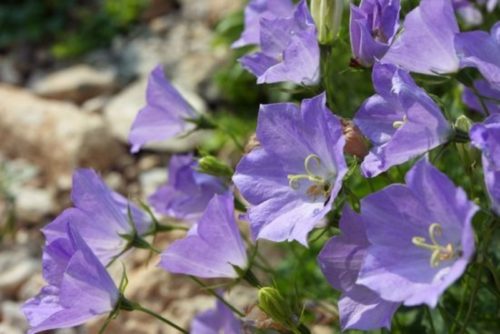












 Start a discussion ...
Start a discussion ...